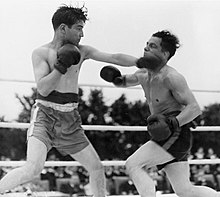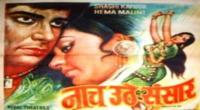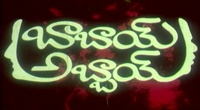This article needs additional citations for verification. (September 2014) (Learn how and when to remove this template message) |
 Two Royal Navy men boxing for charity. The modern sport was codified in England. | |
| Also known as | Western Boxing, Pugilism See note. |
|---|---|
| Focus | Punching, striking |
| Country of origin | Prehistoric |
| Parenthood | Bare-knuckle boxing |
| Olympic sport |
688 BC (Ancient Greece) 1904 (modern) |
Boxing is a combat sport in which two people, usually wearing protective gloves, throw punches at each other for a predetermined set of time in a boxing ring.
Amateur boxing is both an Olympic and Commonwealth Games sport and is a common fixture in most international games—it also has its own World Championships. Boxing is supervised by a referee over a series of one- to three-minute intervals called rounds. The result is decided when an opponent is deemed incapable to continue by a referee, is disqualified for breaking a rule, resigns by throwing in a towel, or is pronounced the winner or loser based on the judges' scorecards at the end of the contest. In the event that both fighters gain equal scores from the judges, the fight is considered a draw-what in other sports would be referred to as a tie-(professional boxing). In Olympic boxing, because a winner must be declared, in the case of a draw - the judges use technical criteria to choose the most deserving winner of the bout.
While humans have fought in hand-to-hand combat since the dawn of human history, the earliest evidence of fist-fighting sporting contests date back to the ancient Middle East in the 3rd and 2nd millennia BCE. The earliest evidence of boxing rules date back to Ancient Greece, where boxing was established as an Olympic game in 688 BC. Boxing evolved from 16th- and 18th-century prizefights, largely in Great Britain, to the forerunner of modern boxing in the mid-19th century with the 1867 introduction of the Marquess of Queensberry Rules.
Contents
History
Ancient history
The earliest known depiction of boxing comes from a Sumerian relief in Iraq from the 3rd millennium BCE. Later depictions from the 2nd millennium BC are found in reliefs from the Mesopotamian nations of Assyria and Babylonia, and in Hittite art from Asia Minor. A relief sculpture from Egyptian Thebes (c. 1350 BCE) shows both boxers and spectators. The earliest evidence for fist fighting with any kind of gloves can be found on Minoan Crete (c. 1500–1400 BCE).
In Ancient Greece boxing was a well developed sport and enjoyed consistent popularity. In Olympic terms, it was first introduced in the 23rd Olympiad, 688 BC. The boxers would wind leather thongs around their hands in order to protect themselves. There were no rounds and boxers fought until one of them acknowledged defeat or could not continue. Weight categories were not used, which meant heavyweights had a tendency to dominate. The style of boxing practiced typically featured an advanced left leg stance, with the left arm semi-extended as a guard, in addition to being used for striking, and with the right arm drawn back ready to strike. It was the head of the opponent which was primarily targeted, and there is little evidence to suggest that targeting the body was common.
Boxing was a popular spectator sport in Ancient Rome. In order for the fighters to protect themselves against their opponents they wrapped leather thongs around their fists. Eventually harder leather was used and the thong soon became a weapon. The Romans even introduced metal studs to the thongs to make the cestus. Fighting events were held at Roman Amphitheatres. The Roman form of boxing was often a fight until death to please the spectators who gathered at such events. However, especially in later times, purchased slaves and trained combat performers were valuable commodities, and their lives were not given up without due consideration. Often slaves were used against one another in a circle marked on the floor. This is where the term ring came from. In AD 393, during the Roman gladiator period, boxing was abolished due to excessive brutality. It was not until the late 16th century that boxing re-surfaced in London.
Early London prize ring rules
Records of Classical boxing activity disappeared after the fall of the Western Roman Empire when the wearing of weapons became common once again and interest in fighting with the fists waned. However, there are detailed records of various fist-fighting sports that were maintained in different cities and provinces of Italy between the 12th and 17th centuries. There was also a sport in ancient Rus called Kulachniy Boy or "Fist Fighting".
As the wearing of swords became less common, there was renewed interest in fencing with the fists. The sport would later resurface in England during the early 16th century in the form of bare-knuckle boxing sometimes referred to as prizefighting. The first documented account of a bare-knuckle fight in England appeared in 1681 in the London Protestant Mercury, and the first English bare-knuckle champion was James Figg in 1719. This is also the time when the word "boxing" first came to be used. This earliest form of modern boxing was very different. Contests in Mr. Figg's time, in addition to fist fighting, also contained fencing and cudgeling. On 6 January 1681, the first recorded boxing match took place in Britain when Christopher Monck, 2nd Duke of Albemarle (and later Lieutenant Governor of Jamaica) engineered a bout between his butler and his butcher with the latter winning the prize.
Early fighting had no written rules. There were no weight divisions or round limits, and no referee. In general, it was extremely chaotic. An early article on boxing was published in Nottingham, 1713, by Sir Thomas Parkyns, a successful Wrestler from Bunny, Nottinghamshire, who had practised the techniques he described. The article, a single page in his manual of wrestling and fencing, Progymnasmata: The inn-play, or Cornish-hugg wrestler, described a system of headbutting, punching, eye-gouging, chokes, and hard throws, not recognized in boxing today.
The first boxing rules, called the Broughton's rules, were introduced by champion Jack Broughton in 1743 to protect fighters in the ring where deaths sometimes occurred. Under these rules, if a man went down and could not continue after a count of 30 seconds, the fight was over. Hitting a downed fighter and grasping below the waist were prohibited. Broughton encouraged the use of 'mufflers', a form of padded bandage or mitten, to be used in 'jousting' or sparring sessions in training, and in exhibition matches.
These rules did allow the fighters an advantage not enjoyed by today's boxers; they permitted the fighter to drop to one knee to end the round and begin the 30-second count at any time. Thus a fighter realizing he was in trouble had an opportunity to recover. However, this was considered "unmanly" and was frequently disallowed by additional rules negotiated by the Seconds of the Boxers. In modern boxing, there is a three-minute limit to rounds (unlike the downed fighter ends the round rule). Intentionally going down in modern boxing will cause the recovering fighter to lose points in the scoring system. Furthermore, as the contestants did not have heavy leather gloves and wristwraps to protect their hands, they used different punching technique to preserve their hands because the head was a common target to hit full out. Almost all period manuals have powerful straight punches with the whole body behind them to the face (including forehead) as the basic blows.
The London Prize Ring Rules introduced measures that remain in effect for professional boxing to this day, such as outlawing butting, gouging, scratching, kicking, hitting a man while down, holding the ropes, and using resin, stones or hard objects in the hands, and biting.
Marquess of Queensberry rules (1867)
In 1867, the Marquess of Queensberry rules were drafted by John Chambers for amateur championships held at Lillie Bridge in London for Lightweights, Middleweights and Heavyweights. The rules were published under the patronage of the Marquess of Queensberry, whose name has always been associated with them.
There were twelve rules in all, and they specified that fights should be "a fair stand-up boxing match" in a 24-foot-square or similar ring. Rounds were three minutes with one-minute rest intervals between rounds. Each fighter was given a ten-second count if he was knocked down, and wrestling was banned.
The introduction of gloves of "fair-size" also changed the nature of the bouts. An average pair of boxing gloves resembles a bloated pair of mittens and are laced up around the wrists.
Request Movie Now
Watch movie Boxer online on Amazon
Up to 70% discount on Mobile and laptop for today : Buy now
Up to 80% discount on Pampers diapers other baby product : Buy now
Stream Movie Now
Watch movie Boxer online
Watch The Movie On Prime
Bhool Bhulaiyaa Full HD Movie Download

Nayee Padosan (2003) Full HD Movie Download
.jpg)
Sohni Mahiwal (1984) Full HD Movie Download
.jpg)
Naach Utha Sansar Full HD Movie Download

Yeh Kaisa Insaaf Full HD Movie Download

Duet Full HD Movie Download

Deewangee (2002) Full HD Movie Download
.jpg)
Kartavya (1979) Full HD Movie Download
.jpg)
Manoranjan (1974) Full HD Movie Download
.jpg)
Balwaan (2009) Full HD Movie Download
.jpg)
Naukar Full HD Movie Download

Alibaba Aur 40 Chor Full HD Movie Download

Satya In Love Full HD Movie Download

Charminar Boys Full HD Movie Download

Alludugaru Full HD Movie Download

Babbi Abbai Full HD Movie Download

Sri Yedukondala Swamy Full HD Movie Download

Thirumathi Oru Vegumathi Full HD Movie Download

Swami Ayyappa- Shabari Malae Full HD Movie Download

Dada Phakt Tuzhyasathi Full HD Movie Download

Ankhon Mein Tum Ho Full HD Movie Download


Download latest Movie from bollywood
Request for Download movie Boxer
- Bollywood movies
- Latest Bollywood movies
- Download all bengali movies
- Download all bhojpuri movies
- Download all english movies
- Download all gujarati movies
- Download all hindi movies
- Download all kannada movies
- Download all malayalam movies
- Download all marathi movies
- Download all oriya movies
- Download all punjabi movies
- Download all tamil movies
- Download all telugu movies
- Bollywood action movies
- Bollywood adventure movies
- Bollywood animation movies
- Bollywood classical movies
- Bollywood comedy movies
- Bollywood crime movies
- Bollywood devotional movies
- Bollywood documentary movies
- Bollywood drama movies
- Bollywood family movies
- Bollywood fantasy movies
- Bollywood historical movies
- Bollywood history movies
- Bollywood horror movies
- Bollywood musical movies
- Bollywood mystery movies
- Bollywood mythological movies
- Bollywood patriotic movies
- Bollywood romance movies
- Bollywood romantic movies
- Bollywood sci-fi movies
- Bollywood social movies
- Bollywood spiritual movies
- Bollywood sports movies
- Bollywood suspense movies
- Bollywood thriller movies
- Bollywood war movies
- Hot actress list
- Hot gujarati actress list
- Hot tamil actress list
- Hot bhojpuri actress list
- Hot assam actress list
- Hot bihari actress list
- Hot jammu and kashmir actress list
- Hot gujarati actress list
- Hot haryana actress list
- Hot konkani actress list
- Hot marathi actress list
- Hot odia actress list
- Hot punjabi actress list
- Hot rajasthani actress list
- Hot kannada actress list
- Hot malayalam actress list
- Hot telugu actress list
- Hot tulu actress list
- Hot Actress list from Indian city
- Hot actress list from ahmedabad
- Hot actress list from alappuzha
- Hot actress list from bangalore
- Hot actress list from bangalore
- Hot actress list from bhopal
- Hot actress list from chandigarh
- Hot actress list from chennai
- Hot actress list from guwahati
- Hot actress list from hyderabad, india
- Hot actress list from indore
- Hot actress list from jaipur
- Hot actress list from kannur
- Hot actress list from kochi
- Hot actress list from kolkata
- Hot actress list from kollam
- Hot actress list from kottayam
- Hot actress list from kozhikode
- Hot actress list from lucknow
- Hot actress list from madurai
- Hot actress list from mangalore
- Hot actress list from mumbai
- Hot actress list from mysore
- Hot actress list from new delhi
- Hot actress list from patna
- Hot actress list from pune
- Hot actress list from thiruvananthapuram
- Hot actress list from thrissur
- Hot actress list from tiruchirappalli
- Hot actress list from vijayawada
- Hot actress list from visakhapatnam
- All Bollywood Movies
- Bollywood Celeb
- >Art Director
- >Audiography
- >Background Music
- >Banner
- >Choreographer
- >Cinematographer
- >Costume Designer
- >Dialogue Writer
- >Director
- >Distributor
- >Editor
- >Executive Producer
- >Hair Stylist
- >Lyricist
- >Music Director
- >Photographer
- >Playback Singers
- >Presenter
- >Producer
- >Production Company
- >Production Designer
- >Screenplay
- >Singer
- >Sound
- >Actor
- >Story Writer
- >Studio
- >Video Director
- >Miscellaneous
- >Publicity (pro)
- >Web Creator
- >Production Labs
- >Publicity Design
- >Publicity Stills
- >Writer
- >Miscellaneous Artists
- >Visual Effects
- >Reporter
- >Music Company
- >Shooting Studios
- >Picturised On
- >Line Producer
- >Co Producer
- >Asst Director
- >Casting Director
- >Cinematography
- >Choreography
- >Dialouge
- >Editing
- >Lyrics
- >Music
- >Story
- >Playback Singer Female
- >Playback Singer Male
- >Actor In A Comic Role (male/female)
- >Child Artiste
- >Ensemble Cast
- >Actor Popular Choice (male)
- >Actor Popular Choice (female)
- >Sa Re Ga Ma Pa Song Of The Year
- >Actor In Supporting Role
- >Actress In Supporting Role
- >Actor In Leading Role
- >Art Direction
- >Actress In Leading Role
- >Sound Recording
- >Costume Design
- >Special Effects
- >Action
- >Actor In A Negative Role
- >Lifetime Achievement Award
- >Cinematic Exellence (director)
- >Cinematic Exellence (male)
- >Cinematic Exellence (female)
- >International Male Icon
- >International Female Icon
- >Actor In A Supporting Role (male)
- >Actor In A Supporting Role (female)
- >Actor In A Comic Role
- >Playback Singer (male)
- >Playback Singer (female)
- >Most Promising Debut (female)
- >Most Promising Debut (male)
- >Most Promising Director
- >Sound Design
- >Lifetime Jodi
- >Marketed Film
- >Jury Award For Best Actor
- >Jury Award For Best Actress
- >Jury Award For Best Film
- >Jury Award For Best Director
- >Playback Singer(male)
- >Lifetime Acheivement Award (male)
- >Excellence Award
- >Jodi Award
- >Performer Of The Year
- >Presented By



